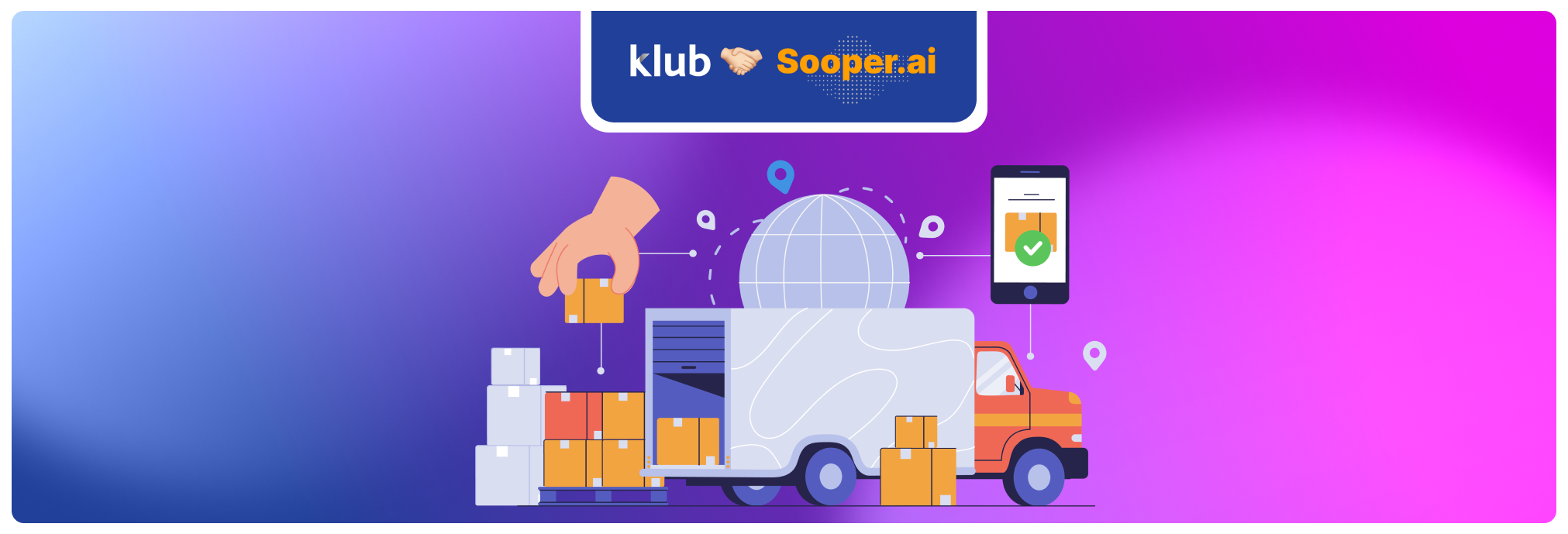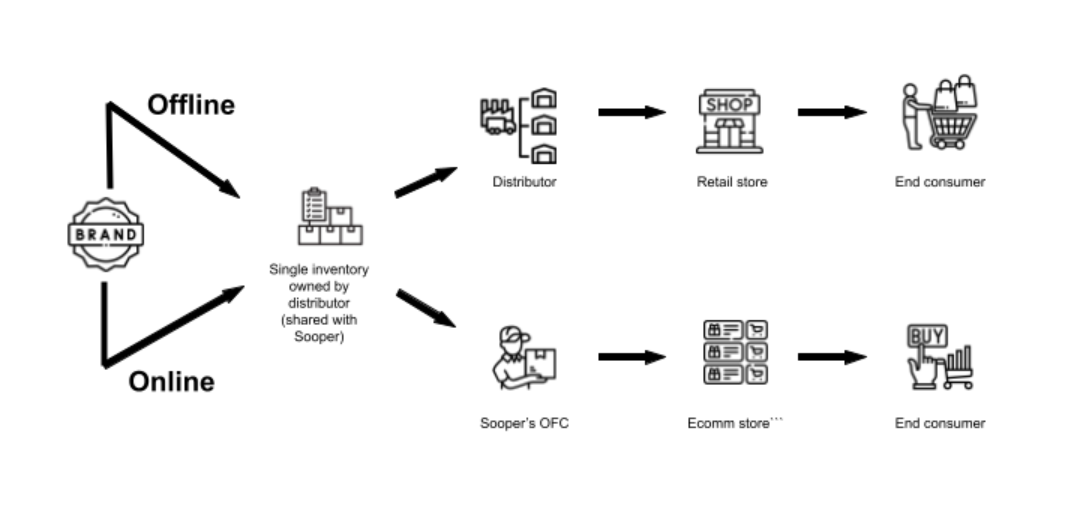
Unleash profit power: Mastering distribution for Indian consumer businesses
Tue Jan 30 2024
5 min read
Are you an entrepreneur in the early stages of building your startup? Have you nailed your product-market fit and are trying to determine the best go-to-market strategy? Or are you already running an online D2C business and looking forward to expanding your retail presence through multi-brand outlets or mom-and-pop stores?
Either way, optimising distribution strategies for consumer goods and product distribution channels is vital for your brand's success. Ensuring effective ecommerce distribution channels and a robust distribution strategy for your online business is crucial.
The benefits of finding and leveraging the right distribution strategies and channels for your digital SMEs range from increased brand awareness and customer acquisition to reduced logistics, inventory management, last-mile delivery costs and increased sales.
We reached out to Arun Uday, founder of Sooper.AI, to explore practical ways of optimising the distribution channels for consumer brands to achieve maximum efficiency and sales. So, get ready to take some notes and elevate your distribution game!
The current distribution landscape in India for consumer brands
Large Indian manufacturers usually utilise a three-tier selling and distribution structure, which includes distributors, wholesalers, and retailers. A company dealing in fast-moving consumer goods (FMCG) and catering to customers throughout India may require 40 to 80 distributors to care for its wholesaler-to-retailer network.
While giant FMCG companies have the financial resources to manage logistics and distribution costs, the same is not true for smaller brands (operating online) still trying to find their feet in the turbulent waters of consumer markets.
The direct-to-consumer (D2C) distribution model involves brands selling their products directly to consumers through their own fulfilment centres or e-commerce marketplaces' fulfilment centres. Third-party logistics providers also assist in this process.
By implementing the D2C distribution model, enterprises can save on logistical costs by avoiding shipping products to wholesalers and instead directly shipping goods to customers.
While there are benefits to implementing the D2C distribution model, some grave challenges still await in the last-mile delivery to the end consumers.
Challenges facing the D2C companies' distribution
1. Transparency in shipment status
Despite the benefits of the D2C model, brands also face logistical challenges. Customers who buy directly from a brand expect complete transparency regarding shipment status, location in transit, and responsible delivery party. Implementing an effective distribution strategy for online selling is vital to address this challenge.
Brands with an efficient delivery tracking system may need help establishing customer transparency, and logistics managers may find it challenging to monitor on-ground operations.
2. Balancing owned and outsourced fleets
Depending on demand fluctuations, businesses may rely on an in-house or rental fleet to meet customer demands with doorstep deliveries.
One major challenge for companies is identifying the right balance between owned and outsourced fleets to conduct delivery operations cost-effectively while ensuring vehicle capacity utilisation.
3. Efficient last-mile delivery
The shift to D2C selling requires efficient last-mile delivery.
However, many brands may need more experience with last-mile dynamics and face challenges such as delivery route planning, rider allocation, route restrictions, customer address verification, etc.
4. Managing multiple inventories
With different online and offline sales distribution channels, inventories can quickly multiply if not managed efficiently.
Without a robust omnichannel strategy, these fragmented and duplicate inventories can lead to increased operational complexities and high-cost overruns.
The solution?
1. Completely owning your distribution system end-to-end
Suppose you are a consumer brand trying to get hold of your distribution channels.
In that case, it’s imperative that you completely own your distribution network to get control and complete transparency for the entire process, right from products leaving your production centre to various fulfillment centres to last-mile delivery to the end consumer. Implementing a comprehensive distribution strategy for your small business can be achieved only through complete ownership.
You must have the flexibility to enter into any commercial agreement with your distributors, which, unfortunately, ecommerce marketplaces and other B2B trade platforms cannot offer.
But you would ask how it is possible.
With the help of an omnichannel sales partner who can tackle the complexities of the Indian distribution markets.
This can be done by leveraging the existing distributor networks throughout the country.
Step 1: The omnichannel sales partner here connects your consumer brand to the network of best distributors and enablers, like the C&F agents, super stockists, logistics providers, etc., in target markets specific to your products.
Step 2: Through their fulfilment centres, these distributors could fulfil the offline bulk retail demand and online demand from a standalone consumer ordering through your D2C website or app.
Step 3: The distributor fulfils the bulk orders to MBO or other retailers, and Omnichannel sales partners like Sooper.AI meet the online demand through their delivery agents.
Now you ask what the omnichannel sales partner like Sooper.AI exactly does.
- Sooper.AI helps unify both online and offline fulfilment with a single inventory.
- They partner with the brands’ offline distributors to create omnichannel fulfilment centres (OFCs) in various locations.
- Inventory already owned by distributors is shared in these OFCs, which is used for fulfilling other types of sales (outside of their traditional offline sales).
- This avoids the problem of fragmentation and duplication of inventories mentioned above.
CURRENT FULFILMENT PROCESS

SOOPER’S FULFILMENT PROCESS

Sooper’s fulfilment process benefits both the brands and the distributors.
- For the brands, it eliminates inventory duplication, reduces operational complexity and lowers the fulfilment cost.
end-to-end
- For distributors, it generates an extra revenue stream through shares from online fulfillments made from their inventory.
2. An ERP for distribution tracking and analytics
The other critical thing is tracking and analysing transactions through different distributors throughout the market.
The need for an ERP (Distributor Management System (DMS)) that
- records all the transactions happening, whether online or offline,
- does demand forecasting for efficient inventory management,
- a real-time analytics support so that the operations run efficiently.
With Sooper.AI, every distributor gets an AI-driven ERP system by default with inventory management, CRM and working capital management modules.
This also doubles up as a Distributor Management System (DMS) dashboard for the consumer brands signing up with Sooper.AI to sort their distribution hurdles.
All the transactions happening on Sooper.AI’s marketplace get recorded on this ERP by default without doing anything extra.
In a nutshell, the key to success for Indian consumer brands lies in finely tuned distribution strategies.
Overcoming D2C distribution hurdles and go-to-market (GTM) demands 1. a dynamic omnichannel partnership and 2. a seamless integration of ERP systems.
By adopting these powerful approaches, you can overcome these obstacles and streamline your distribution channels for online selling. With these in execution, consumer brands can not only navigate challenges but pave the way for transparent, efficient operations—ushering in a new era of sustained growth.
So, gear up, implement these insights, and watch your brand conquer the market with unparalleled resilience and revenue.








